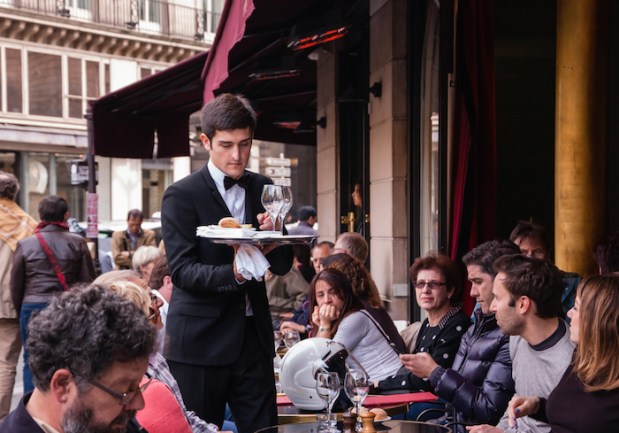Time For A Restaurant Scheduling Shift

In ResTech, we write a lot about showy tech like burger-flipping robots, virtual reality dining and magic hand-sanitation systems. But what about the quiet tech? The behind-the-scenes stuff making restaurants run smoothly, the systems that are just steadily plugging away to increase efficiency and work satisfaction? Everybody knows that time is money, and it doesn’t take a flashy robot to save it.
Take shift scheduling, for instance. Some managers use an Excel spreadsheet to chart this out. Many others are still using pen and paper. Either way, filling all the right positions with enough employees – and with ones who are best suited to the position, i.e. assigning bartenders to the bar and hostesses to the hostess stand rather than just getting warm bodies on the floor – can take hours.
Managers must also account for busy or quiet shifts and time that employees may have requested to take off. All it takes is one employee looking at that schedule and asking to change a shift to throw a wrench in the entire thing and send managers back to the drawing board.
For someone running a business, surely there are better ways they could be spending their time. But someone has to do the schedule. That’s where the quiet, behind-the-scenes tech comes in.
One platform that’s trying to solve this issue is Planday, an employee scheduling software for businesses with hourly workers (which means more than just restaurants – call centers, medical and dentist’s offices all have shift workers, just to name a few).
But for restaurants in particular, technology has been slow to come to the industry. Kyra Kuik, Planday’s head of content, notes that other workplaces have tools like Google Docs and Dropbox, but when it comes to food and hospitality, “They’re long overdue” for a tech upgrade – especially considering the makeup of their workforce.
“A lot of hourly workers are millennials, and they’re native tech users,” Kuik said. “Many can’t remember a time when they didn’t have smartphones. Going into a place where it’s all offline and they have to go into a place physically to check their schedule – it doesn’t make sense to them.”
Instead, Planday has created a one-stop digital platform for scheduling and communication. Managers can send out notifications such as updated menus or new alarm codes to the entire staff at once. As for all that time spent scheduling, Kuik said the system can save managers up to 75 percent of it, especially if they’re migrating from a paper system.
Employees use the software to clock in and out, and their exact hours are sent to payroll, so they don’t get paid for those few minutes they showed up late or left early. Like dropping change in a jar, that savings may not look like much, but Kuik said that, combined with more efficient scheduling, this method can save businesses around five percent on salary costs.
Planday certainly isn’t the only digital solution for restaurants and schedule management. These solutions are emerging because they must, said Kuik. A changing workforce calls for changes in the way things are done, and that goes beyond meeting millennials where they are with smartphone usage.
“For managers as well,” said Kuik, “they’re a little older than millennials, but they use all that tech in their private lives. So it’s an overall evolving work culture.”
Nowhere is that evolution more visible than in the sharing economy. Kuik believes that technologies like Uber and Airbnb are just the beginning, and the restaurant and hospitality industries have a lot of potential benefits to reap from them.
What if a restaurant could post a shift for any qualified employee in the area to claim? For instance, if a bartender called out sick at the last minute and the manager needed to fill that spot? In an Uber of X model, anyone nearby who has the right training and verified skills could jump in.
Not only would that help restaurants get out of a pickle, it would also benefit those floating employees who maybe need a little extra cash, can’t get enough hours at their regular job, or simply found themselves with an unexpected night off. That, said Kuik, is how millennials live and work today. It’s less about work-life balance and more about work-life integration, she said. Their lives and schedules are very fluid. That’s why they love the gig economy and anything following an Uber of X structure.
Planday uses a model like this on a smaller scale, enabling employees within a specific restaurant to claim unexpected open shifts at their own workplace. A manager can put a call out to all qualified employees asking them to help fill a shift, rather than communicating with each one individually. The software filters employees so that only those who have the right skill set are contacted (again, think bartenders, who need special training and certifications that regular wait staff don’t).
The advantage is that those employees are already trained and trusted by the establishment. To introduce a sharing economy scheduling interface on a larger scale would call for methods to vet and verify those who are picking up shifts so that managers can feel confident handing operations over to them, Kuik said, but the landscape is developing.
“Anyone can be an equal player in the work ecosystem,” Kuik said. “It’s not viable to have an authoritarian work environment where personal needs aren’t met.”
